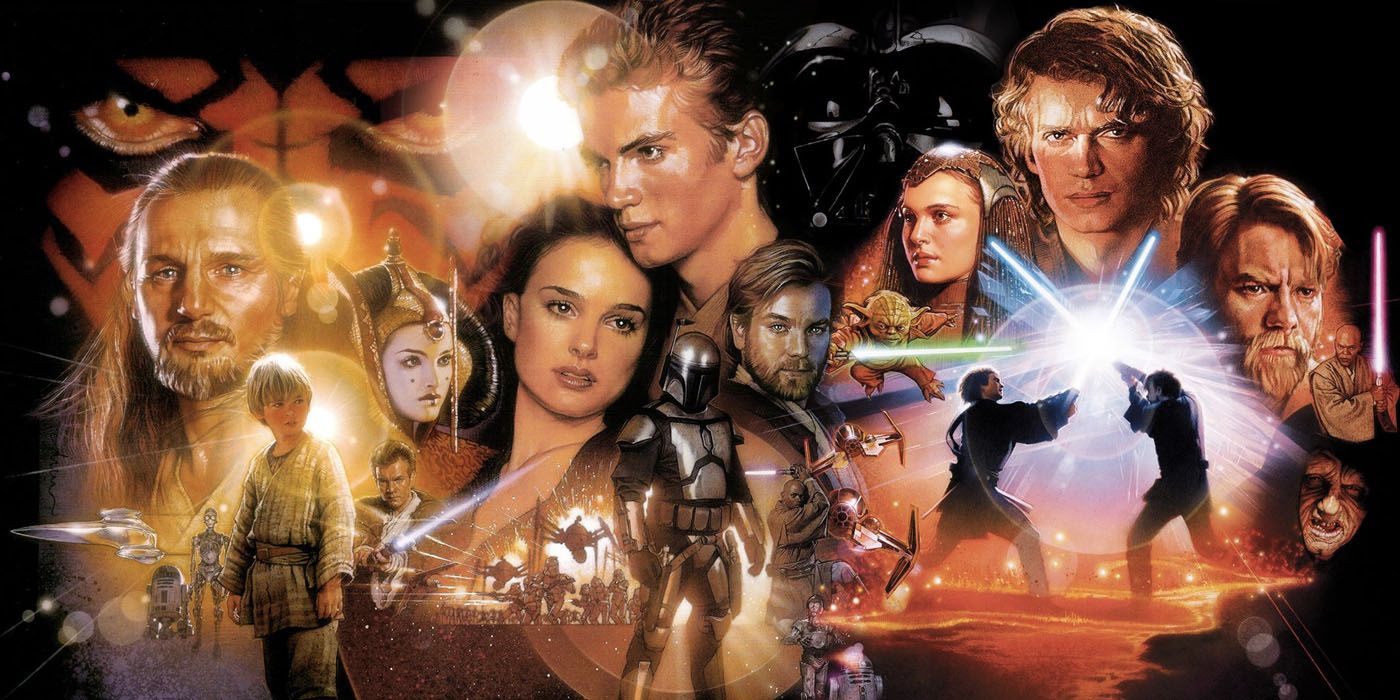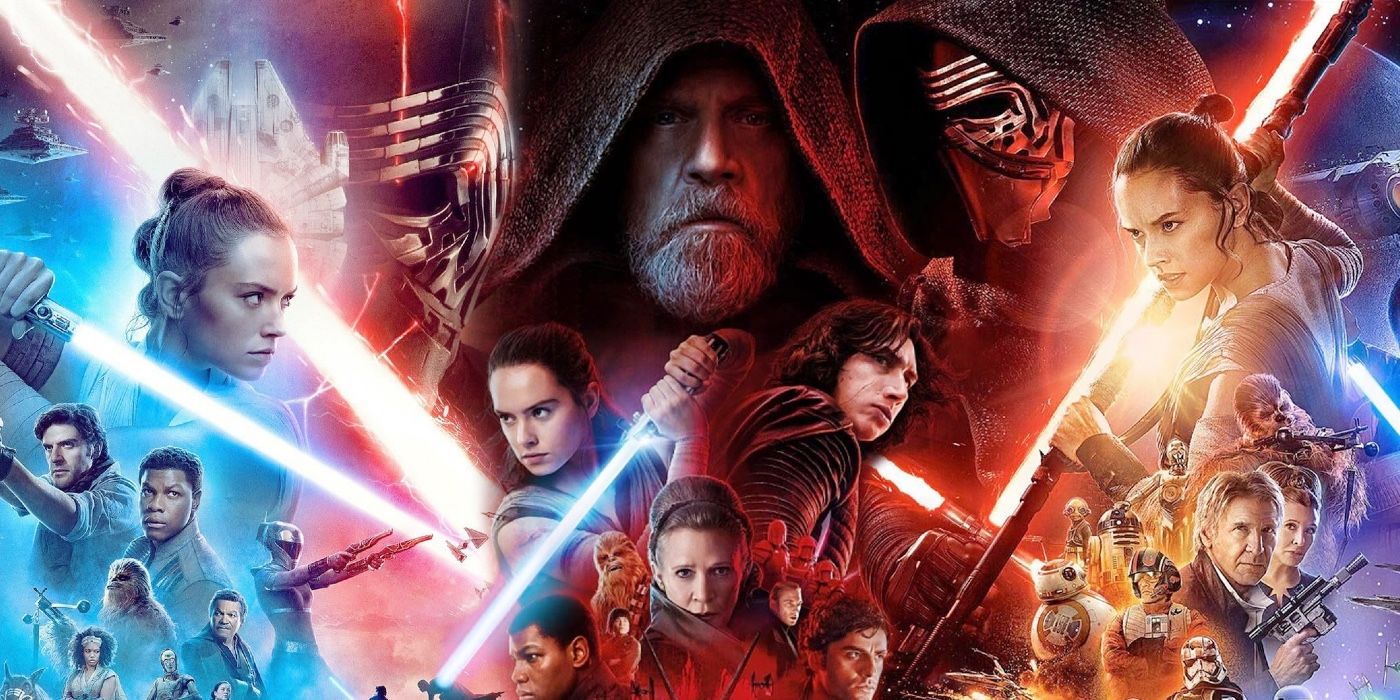The Star Wars prequel and sequel trilogies were met with mixed receptions among both critics and fans. Curiously, the two trilogies are divisive for completely different reasons. The prequels have a strong central premise but are muddled with sloppy writing and an overuse of sterile CGI. The sequels, on the other hand, are well-made movies, but they lack a cohesive narrative structure tying the films together.
The key difference is that the Star Wars prequels tell a linear story of Anakin Skywalker's fall to the dark side and Emperor Palpatine's rise to power. Although there are various subplots and peripheral characters strewn about, those two story elements are a throughline connecting The Phantom Menace, Attack of the Clones and Revenge of the Sith. This coherence is where the sequel trilogy falls completely flat.
The Writers Played a Crucial Role in Shaping the Star Wars Trilogies

One reason for this dichotomy can be attributed to the writers involved. George Lucas was the singular voice behind the prequel trilogy, and for better or worse, it showed. His focus was on world-building -- he expounded on Jedi mythology and introduced several new species, creative environments and compelling villains. Lucas' intentions may have been cynical (wanting to sell as many toys as possible) and his writing was questionable at best, but it's clear that there was an overarching story he wanted to tell.
The Star Wars sequel trilogy didn't have a singular voice. J.J. Abrams and Lawrence Kasdan wrote The Force Awakens, Rian Johnson wrote The Last Jedi and Abrams returned with Chris Terrio to write The Rise of Skywalker. This is why story elements zig-zagged from one film to the next, such as the abrupt death of Supreme Leader Snoke in The Last Jedi, the wavering backstory of Rey and the baffling return of Emperor Palpatine in The Rise of Skywalker.
To clarify, the problem isn't inherently that there were different writers. After all, the original Star Wars trilogy had different writers for each film -- George Lucas wrote A New Hope on his own, Lawrence Kasdan and Leigh Brackett wrote The Empire Strikes Back and Lucas and Kasdan wrote Return of the Jedi. However, the story being told was still Lucas' vision from beginning to end. He had a plan for the big-picture and hired various writers to help execute his plan.
J.J. Abrams and Rian Johnson Had No Roadmap To Follow for the Sequels

The Last Jedi director Rian Johnson admitted that, while he did have conversations with Abrams before the film, he was given no guidance on where the story should go after The Force Awakens. As such, he had complete creative control to take the story in whatever direction he wanted for The Last Jedi. It's great for a studio to give its writers and directors creative control, but it doesn't bode well when the second film in a trilogy is handed to someone without an end goal in mind for the third film.
This is why certain characters got lost in the shuffle between The Last Jedi and The Rise of Skywalker. Finn was one of the most promising central characters in The Force Awakens -- a former stormtrooper who decided to fight with the Resistance. He was even the first non-Force sensitive character to have a lightsaber duel on the big screen. Fans speculated if he was unknowingly Force-sensitive, if he would develop a relationship with Rey (or Poe) and if he would become a Jedi by the end of the trilogy. Unfortunately, none of these theories panned out. Finn was relegated to a largely inconsequential role in The Last Jedi, and he was practically a side character in The Rise of Skywalker.
Similarly, Rose Tico was introduced as a major player in The Last Jedi. She joined Finn on his side quest to locate a codebreaker on Canto Bight, and they even sparked a romance by the end of the film. In The Rise of Skywalker, however, she was effectively an extra with very little screen time. Poe also had an aimless subplot in The Last Jedi regarding mutiny and respect for authority, yet it led to nothing in the grand scope of the trilogy. By the second film in the original trilogy, Han Solo was being frozen in carbonite and Luke Skywalker found out that Darth Vader was his father. Even in Attack of the Clones, Anakin Skywalker fell in love, massacred a Tusken village and lost an arm after being defeated by Count Dooku. Where were these dramatic character moments in the Star Wars sequel trilogy?
.jpeg)
Again, this is not to say the sequels are bad films. On the contrary, they're incredibly well-directed and visually stunning, with The Last Jedi, in particular, being the most beautiful film in the entire franchise. There are plenty of great concepts as well, such as Rey and Kylo forming a tentative alliance, Luke's rejection of the Jedi dogma and Rey discovering that she has an inclination toward the dark side. That said, the operative term is "concepts" because none of these ideas were fully realized, largely due to the lack of a roadmap behind the scenes.
This is why the Star Wars prequels excelled where the sequels failed. George Lucas knew exactly what he was leading up to in Revenge of the Sith, and while he stumbled a bit getting there, he succeeded in telling a story about the birth of Darth Vader and the rise of Emperor Palpatine. The sequels began with a clean slate and promising characters but winged the narrative in each successive film. The main takeaway is that, while the sequels may be better individual movies, the prequels function as a better trilogy.


